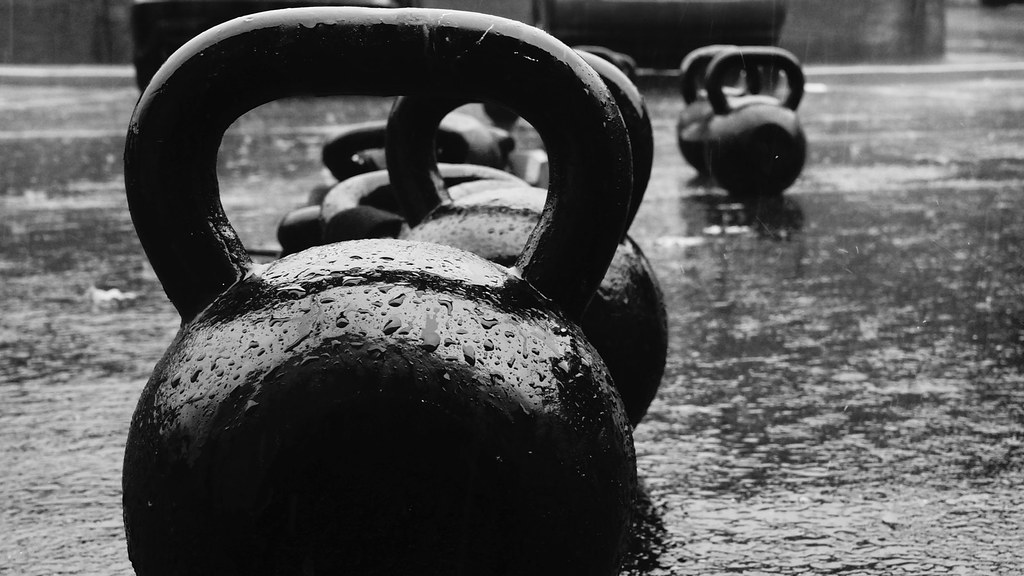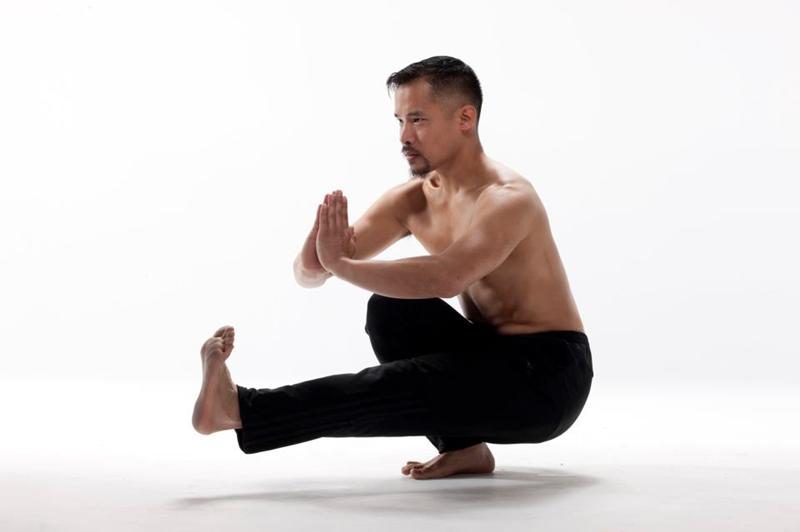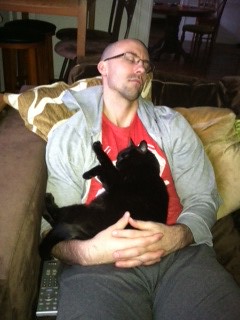I came across this comment yesterday on Twitter from a friend of mine who’s an accomplished trainer and someone I respect a lot:
How many articles can be written about the deadlift? And when writing, does the author ever say to self, “maybe I should wait on this one.”
I can’t say I disagree with his tone. I mean, I get it. There are metric shit-ton[footnote]This is an actual unit of measurement. It’s somewhere in between fuckload and a lot. Give or take.[/footnote] of deadlift articles out there, and I’ve helped contribute my fair share.
Sorry!
The way I see it: Michael Bay keeps making those god-awful Transformers movies due to popular demand. Deadlifts are popular. So, yeah, there’s the correlation.
Just run with it.
I’ll admit that there’s really nothing new to say about deadlifts (except that they’re not god-awful), and I can understand the degree of eye-rolling by some coaches when the internet is hijacked for a few days with a flood of articles and blog posts on the topic; not coincidentally all of which happen to coincide with the revamped re-release of a stellar resource like David Dellanave’s Off the Floor: A Manual for Deadlift Domination.
For what it’s worth: there are a lot of people who stink at deadlifting and are eager to learn how to perform them right and learn how to implement them into a well-structured, properly progressed program.
I like to think of myself – and this website – as a resource that helps point people in the direction of quality information. Information from friends/coaches I trust (and more often than not have a personal relationship with) and information I know will help many people.
I can do it in a way that’s non-douchy and provide unique, useful content – because I know what I’m talking about – as an adjunct to the material (like I will do below).
Or I can do one of two things:
1. Be annoying internet marketing guy
“HEY EVERYBODY BUY THIS MANUAL/DVD BECAUSE I SAID SO, AND BECAUSE I LIKE DEADLIFTS (even though I don’t train anyone in real life). AND BECAUSE I HAVE A TRIBAL TATTOO ON MY ARM! “
2. Stay silent and rely on videos like this to educate people
I choose neither.
And on that note here’s some words I put together for you to read.
The Deadlift: Beginner Basics
The deadlift is a “simple” movement, and I’d argue the least technical of the “big 3” (squat, bench press, deadlift). Which isn’t to say it’s easy to perform nor doesn’t require some attention to detail. But for all intents and purposes we can describe the deadlift as follows (courtesy of renowned strength coach, Mark Rippetoe):
“Bar is on the ground. One bends over to pull the bar, with straight arms, off the floor and up the legs until the knees, hips, and shoulders are locked out.
And then you piss excellence all over the place.”
That last part was added by me.
Another perspective is that of Dan John:
Squat = maximal knee bend and maximal hip bend. In other words, the squat is a squat.
Deadlift = minimal knee bend and maximal hip bend. In other words, the deadlift is a hip hinge.
[NOTE: for some ideas on how to groove a solid hip hinge before adding an external load, check out THIS article on How to Hip Hinge Like a Boss.]
Benefits of the Deadlift
-
It Gets You Stronger
Deadlifts have been around since the beginning of time. And while I can’t back that up with any scientific evidence, it’s true.
Of Note: I can’t tell you how many times I’ve trained at a gym other than my own and after a set of deadlifts someone will approach me and comment: “hey, that thing you’re doing. Is that, like, CrossFit?”
I’ve grown out of my hatin on CrossFit phase – I recognize the good it’s done with getting the masses excited to exercise, and better yet, lifting weights – so I generally just chuckle it off and inform the commentee that, “No, I’m not CrossFitting,” and that “No, CrossFit didn’t invent lifting weights.”
Anyways, deadlifts have been around for a while and there’s a reason why they’re a staple in every single successful strength-training program ever written, ever. (citation needed).
They work.
If strength is the goal, you need to incorporate movements that allow you to lift a bulldozer boatload of weight. Deadlifts fit that bill.
-
It Builds Muscle
A funny thing happens when someone starts deadlifting consistently. They add muscle to their frame. More specifically they add muscle to the areas which can’t be scene by the mirror and are often most neglected – the posterior chain (glutes, hamstring, erectors).
Which serves as an appropriate segue to the next benefit…
-
It Improves Performance
What kind of performance? I don’t know…any kind of performance.
Hitting a baseball or golf ball further, dunking a basketball, improving running efficiency (the more force you can develop and put into the ground, the more efficient you are at propelling yourself towards the finish line), the ability to walk down a flight of stairs and not break your hips in half, making yourself harder to kill, the bedroom (BOM CHICKA BOM BOM), it’s all fair game and part of the conversation.
One of the best explanations I’ve ever heard comes, again, from strength coach, Dan John. He was asked one time by an athlete of his “what muscle does (insert name of any exercise you want here) does this exercise work anyways?”
I don’t recall he was being asked about the deadlift, but his answer is fitting nonetheless:
“You know that muscle that allows you to jump really high, over the defending cornerback, to catch the football for the game winning touchdown? That muscle.”
Fuckin A.
In reality, however, we don’t have to correlate the deadlift to just athletic performance.
It carries many other “real life” benefits with it outside of the football field, baseball diamond, soccer pitch, or basketball court (to name a few).
Anything that requires a basic hip hinge pattern – while maintaining a neutral spine – can be labeled a deadlift.
Grandma bending over to pick up a potted plant? That’s a deadlift.
The random woman picking up her child at the local playground? A deadlift.
Franco Columbo moving his father’s car out of a cramped parking space in the documentary Pumping Iron? You guessed it, deadlift.
-
It Makes You Bulletproof
Now just to be clear, that’s a metaphor. Deadlifts won’t actually make you bulletproof. Don’t be stupid. Bullets hurt. And will kill you.
Bulletproof in this context is just a more nerdy way of saying “prevent injuries.”
From an athlete’s perspective: Deadlifts will (hopefully, nothing is guaranteed) help prevent injuries like ACL tears as well as nagging injuries to the knees – like tendinitis (acute inflammation) and tendinosis (chronic inflammation or actual degeneration of soft tissue) – due to the fact the posterior chain is so heavily activated and strengthened.
From a non-athlete’s perspective: Deadlifts will help to “offset” many of the postural imbalances and dysfunctions that tend to manifest when forced to sit at a desk all day in front of a computer.
Think of what’s required in order to perform a deadlift: ample ankle dorsiflexion, hip extension, thoracic spine extension, and pelvic control, amongst other things…all of which tend to diminish when seated for long periods of time.
Plus, deadlifts help to address any pent up aggression that may spill over from work. I.e., they’re a much better alternative to stabbing your boss or annoying co-worker in the neck. Unless they deserve it.
In that case, stab away.
Note: video below doesn’t include any stabbing, but it’s hilarious nonetheless.
One last thing to consider is Wolff’s Law and Davis’s Law.
You can’t discount physics.
The former states that bone in a healthy person or animal will adapt to the loads it is placed under. The latter states the same thing, except with regards to soft tissue.
Deadlifting = strong bones + soft tissue. You need a minimal essential strain (MES) in order for tissue to adapt. Likewise, in order to strengthen tissue, you need to load it. Sorry, but your cute little leg extensions and leg curls all in the name of “being more spine friendly” aren’t going to get the job done.
Key Coaching Cues and The Importance of Getting (and Maintaining) Tension
David actually nailed all the key cues to use with regards to cleaning up deadlift technique in yesterday’s post.
To repeat:
These probably aren’t going to be groundbreaking, but time tends to prove out what works best, and these have been around for a while.
- Chest up – let me read the writing on your shirt.
- Pull the bar into your shins, you’re going to keep contact with your body through the entire pull.
- Take the slack out of the bar by making it “clink”.
- Pull your shoulder blades down into your back pockets.
- Push the floor away, and stand up tall.
- Optionally, if someone over-extends or arches, I like to explain that you want to try to cinch your ribs down to your pelvis. I don’t like “ribs down” as this never seems to make sense to people.
That’s it. I found that those five or six cues fix 99% of the issues I see.
Another component to consider – and one I feel is crucial – is the idea of getting and maintaining tension throughout a set. Many people lack the wherewithal to engage their lats from the start, and hence lack upper back stiffness. One of two things inevitably happens: they round their upper back or the hips shoot up first.
To counteract this I like to cue people to pretend as if they’re trying to squeeze an orange in their armpits. Research backs up the efficacy of using more external cueing when coaching clients, and this cue works like magic much of the time.
However, in the event that that doesn’t jive, a simple drill I’ll use is to attach a band to the barbell itself and the trainee/athlete must learn to pull the bar close to the body AND KEEP IT THERE the entire time.
The band will want to pull you forward, and the objective here is not to allow that. That thing you feel? Those are your lats.
Get More Juicy Information
That is no where near everything I’d like to cover with regards to the deadlift for beginners (the part where I explained the benefits is section of a treatise I’m writing for the Personal Trainer Development Center that I hope will serve as “go to” source on anything/everything deadlifts,” but hopefully it gives you some insight and “ammo” as to why it’s an excellent exercise to include in your training and that of others.
I’d encourage you to check out Off the Floor: A Manual for Deadlift Domination for more similar content in addition to a full manual, programs, a video library, and a bevy of other goodies.
It’s on SALE this week only and you can go HERE for more information.











